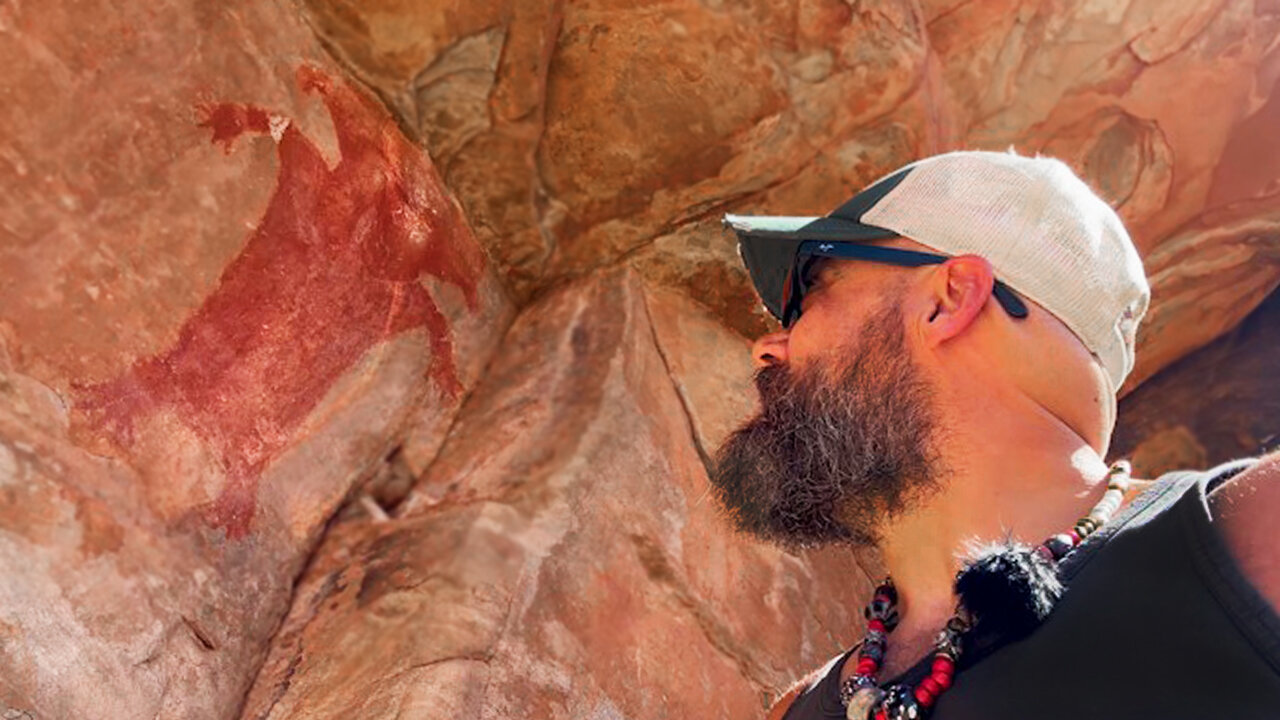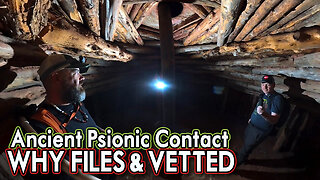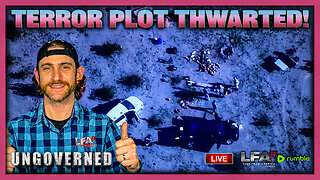Premium Only Content

the Red Man Portal Pictograph
the Red Man Portal Pictograph
https://zealpro.com/ - Use code "CRUSHER" to get 10% off all bike covers!
All My Links https://linktr.ee/carlvibe
Warner Valley and Fort Pierce, located in Washington County, Southern Utah, are steeped in layered history that stretches back thousands of years. Long before the arrival of European settlers or Mormon pioneers, this region was home to Indigenous peoples who left behind a rich archaeological legacy in the form of petroglyphs and pictographs. These rock carvings and paintings provide glimpses into the lives, beliefs, and movements of ancient cultures who thrived in this arid landscape.
The most prominent cultural group associated with the petroglyphs in Warner Valley and Fort Pierce is the **Fremont culture**, which existed from around 300 to 1300 AD. These people were semi-sedentary, practicing both foraging and limited agriculture, and they lived in pit houses and rock shelters throughout the region. The Fremont are well known for their distinctive rock art, which includes anthropomorphic figures with trapezoidal bodies, elaborate headdresses, and intricate patterns. These figures are often surrounded by representations of animals, hunting scenes, and abstract symbols. In the Fort Pierce area, several panels depict these characteristic forms carved into volcanic basalt and desert varnish-coated sandstone cliffs.
Before the Fremont, **Archaic-period peoples** occupied the region, dating as far back as 8,000 years ago. Their presence is inferred through more simplistic petroglyphs, tools, and temporary camp remains found throughout Warner Valley. These early groups were nomadic hunter-gatherers who followed seasonal migrations of game and plant resources. Over millennia, their descendants evolved culturally and adapted to environmental changes, eventually giving rise to the Fremont and other regional cultures.
Warner Valley and Fort Pierce were important travel corridors for Indigenous peoples. The area's water sources—such as the spring-fed Fort Pierce Wash—attracted both animals and humans. Fort Pierce Wash itself runs from the mountains east of St. George into Warner Valley and was a natural pathway that later became a strategic route for early Mormon settlers. Archaeological evidence suggests that the valley served as a seasonal gathering site or a ceremonial waypoint along wider trade and migration routes connecting the Great Basin, Colorado Plateau, and Arizona Strip.
The area’s rock art likely held ceremonial or spiritual significance. Some researchers believe the petroglyphs may represent cosmological stories, clan symbols, or shamanic visions. Others may have served as territorial markers, hunting magic, or records of important events. The interpretation of these symbols remains largely speculative, but their style, patina, and location confirm their antiquity and cultural importance.
By the late 1800s, Mormon pioneers established Fort Pierce as a small outpost, named after Captain John David Pierce, who helped build the structure during the Black Hawk War to protect settlers from raids. The fort was never heavily occupied, but it still stands today in partial ruin and serves as a landmark near many of the ancient petroglyph panels. These overlapping histories—ancient and modern—make Warner Valley and Fort Pierce a vivid example of Southern Utah’s deep human timeline, preserved in stone and story across the desert landscape.
-
 59:16
59:16
CarlCrusher
2 months agoAncient Psionic UFO Contact in Skinwalker Territory with Vetted & WHY Files - Ep 3
28.4K6 -
 LIVE
LIVE
efenigson
5 minutes agoSentenced For Building Freedom! Live: Samourai Wallet's Keonne Rodriguez
3 watching -
 LIVE
LIVE
Benny Johnson
15 minutes agoDark New Mysterious Footage Of Brown University Killer RELEASED After Republican Leader MURDERED...
782 watching -
 LIVE
LIVE
Badlands Media
7 hours agoBadlands Daily: 12/16/25
2,004 watching -
 1:05:22
1:05:22
Graham Allen
1 hour agoDid Trump Cross A Line? Erika & Candace Are Alive! + Are We Changing Minds On Radical Islam?!
42.9K822 -
 LIVE
LIVE
Wendy Bell Radio
5 hours agoUnapologetic
7,225 watching -
 1:10:11
1:10:11
Chad Prather
9 hours agoWhen Life Pushes You Out of Place
69K23 -
 13:48
13:48
Rethinking the Dollar
10 hours agoLiquidity Flood Incoming? This Chart Will Shock You.
441 -
 LIVE
LIVE
The Mike Schwartz Show
13 hours agoTHE MIKE SCHWARTZ SHOW with DR. MICHAEL J SCHWARTZ 12-16-2025
739 watching -
 LIVE
LIVE
LFA TV
12 hours agoLIVE & BREAKING NEWS! | TUESDAY 12/16/25
3,011 watching